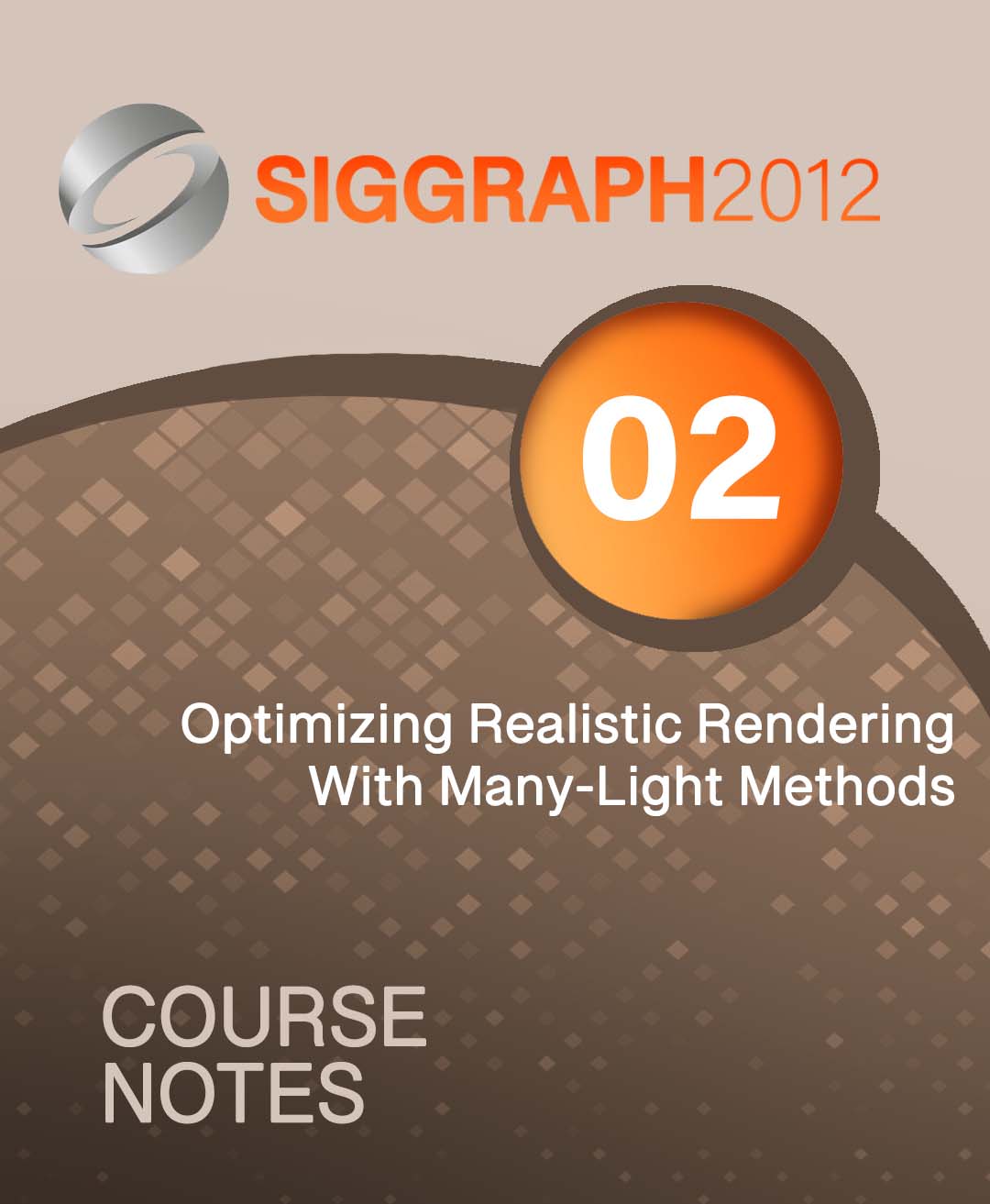“Optimizing Realistic Rendering With Many-Light Methods” by Křivánek, Hasan, Arbree, Dachsbacher and Walter
Conference:
Type(s):
Title:
- Optimizing Realistic Rendering With Many-Light Methods
Organizer(s):
Presenter(s)/Author(s):
Entry Number: 02
Abstract:
Prerequisites
Familiarity with rendering and with concepts of global illumination computation is expected.
Level of difficulty Intermediate
Who Should Attend
Industry professionals and researchers interested in recent advances in realistic rendering with global illumination. Software developers and managers looking for the right global illumination solution for their application will also benefit from the course.
Abstract
With the recent improvements in hardware performance, there has been an increased demand in various industries, including game development, film production, or architectural visualization, for realistic image rendering with global illumination. However, the inability of the state of the art algorithms to meet the strict speed and quality requirements fosters more research in this area. Many-light rendering, a class of methods derived from the Instant Radiosity algorithm proposed by Keller [1997], has received much attention in recent years. By reducing light transport simulation to rendering the scene with many light sources, the many-light formulation offers a unified view of the global illumination problem. Unlike with other GI algorithms, the quality-speed trade- off in the many-light methods (in terms of the number of lights) is able to produce artifact-free images in a fraction of a second while converging to the full GI solution over time. This formulation is therefore potentially able to cater to all of the aforementioned industries.
The primary goal of this course is to present a coherent summary of the state of the art in many-light rendering. The course covers the basic many-light formulation, as well as the recent work on its use for computing global illumination in real-time, on improving scalability with a large number of lights, on using many-lights as a basis for a full GI solution, and also on rendering participating media. The course will focus on the clarity of the underlying mathematical concepts as well as on the practical aspects of the individual algorithms. An important part of the course will be devoted to the practical considerations necessary for the use of many-light methods in the Autodesk 360 Rendering service.





